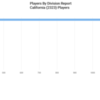@adbono posted:There are 3 categories of JUCOs - just as there are in 4 year NCAA schools: D1, D2 & D3. If fully funded (and many aren’t) D1 JuCos can offer 24 full scholarships which can (and often are) be split into half’s. D2 JuCos also offer scholarships but can only offer books, tuition & fees - roughly 50% of the annual cost. D3 JuCos don’t offer any athletic scholarships. Some, but not all, JuCos have on campus housing. As far as the situation with your son goes, the JuCo in question has either already given away all their scholarships or they are only interested enough to offer a walk on opportunity. Even when schools say they are out of money, most of them hold a scholarship or two back in case a hard throwing pitcher shows up out of nowhere at the last minute. My advice would be to keep looking. A walk-on offer can be accepted at the 11th hour. No need to jump at that.
The only caveat I would add is "depending on state laws". For instance, while a D2 JuCo can offer scholarship money in terms of tuition, fees and books according to NJCAA guidelines, in Virginia, by law JuCo's cannot offer athletic scholarships.
In 2012 my son had an "offer" from Patrick Henry Community College, but in reality it was just an invitation to try out. Fortunately, he qualified for a Commonwealth Grant that covered 95% of his tuition and he made the team and became a starter his freshman year.


